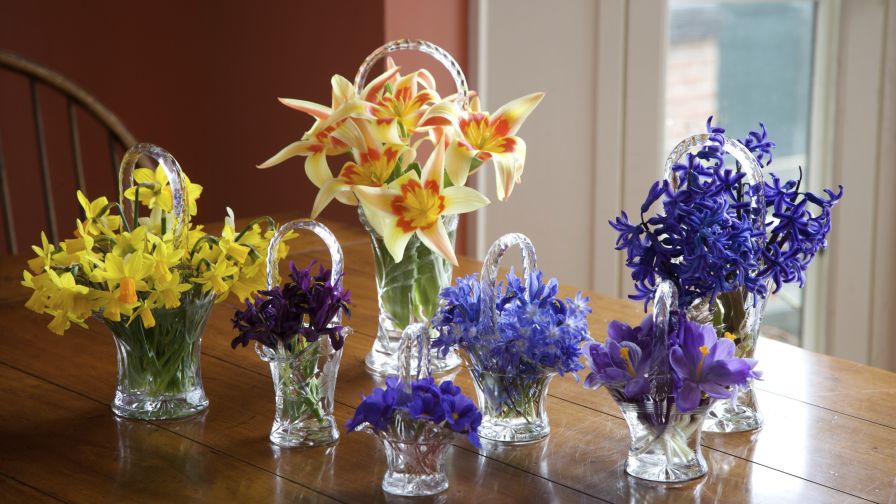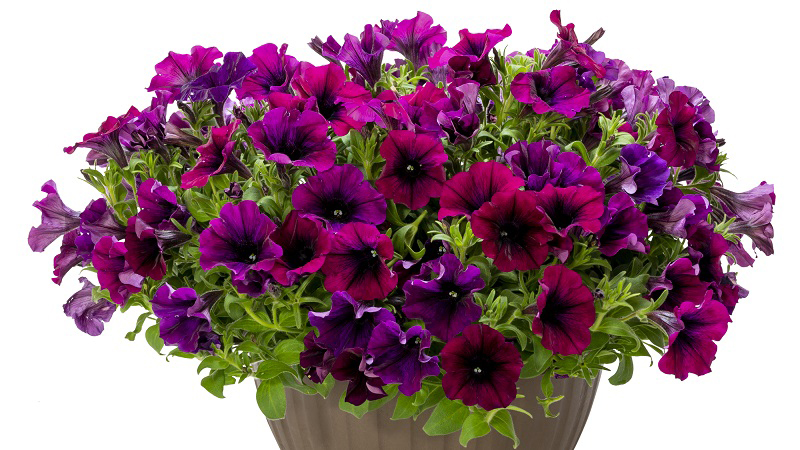What Cut Flowers and Wordle Have in Common

The interest in domestic cut flower production continues to grow, as does the number of fresh cut flower farms. Photo: Allan Armitage
I have written for Greenhouse Grower and Meister Media Worldwide for years. It is a little scary to write something that many others will read, and even scarier to do it every month. For content, sometimes I will purposefully seek ideas at trade shows and industry gatherings, listening to people’s comments on issues, problems, and successes. I go out of my way at California Spring Trials, Cultivate, MANTS, and other gatherings to share new plants and trends.
And then sometimes without my even being aware, realities just wash over me. In this space, I have watched the evolution of the houseplant passion by apartment dwellers (they even name their fiddleleaf figs). I have been astonished at the passion for succulents, and I have watched people embrace the joy of plants and gardens to reduce the misery of COVID-19. I realized, without doing anything, that we are essential. It took something dreadful like COVID to truly expose our value to others. Sometimes filling this column can be easy.
Now, I have been blindsided again. As I have been simply minding my own business, two more events are washing over me without my asking. One is rather silly to share with you, but it shows nothing stays the same. The other just keeps growing.
Two Popular Trends
I will ask you three questions. First, what do the following words have in common:
- Skill
- Elder
- Watch
- Humor
They are all five-letter words and that’s about it. However, many of you will immediately recognize these as recent answers to a new phenomenon called Wordle.
Likely at least one member of your family has gone quiet (or loudly cursed) for 15 minutes while trying to come up with the word of the day. I enjoy puzzles, but the popularity of this has gone through the roof — I had no idea.
Here’s my second question: What do the following people have in common?
- Judy Laushman
- Nicole Pitt
- Erin Benzakein
These are but three people, of many I am sure, who are true innovators and influencers of one of the lesser talked about aspects of our business: domestic cut flower production. Judy is the Executive Director of the Association of Specialty Cut Flower Growers (ASCFG). Nicole is the owner of Flower Hill Farm in New York, and Erin is the Founder of Floret, a cut flower operation in Washington State. These are amazing people, who I have gotten to know vicariously through the many people who sing their praises every day.
Domestic production of cut flowers is hardly new. The ASCFG has been in business since the 1980s, providing growers with tools and knowledge to help them succeed. However, in the last few years, its membership has exploded, as has the popularity of the insights and information Nicole and Erin bring to the marketplace, helping veterans and in particular providing insights for new growers. The interest in domestic cut flower production and the number of fresh cut flower farms is definitely rising, even if those of us working with petunias and landscape plants have no idea.
The Companies Paving the Way
My last question is, what do the following companies have in common?
- Just Joy Farm
- Olive Branch Farm
- Blue Sky Farm
- Hemmingway Hill
- Fuller Flowers
- Wild Dandelions Farm
- Honey Bee Grove Flower Farm
- Gooney Bird Farm
The eight names above are cut flower farms, all new in the last year or two, and but a fraction of the companies I am hearing from. Judy, Nicole, and Erin have been reaching hundreds of veteran and new growers every year, and many of their followers have been reaching out to me.
Like Wordle, they seem to have just popped up, but of course, that is not so. Not one of these businesses appeared without serious discussions around the kitchen table. And you can be sure that all the owners have invested their money, their time, and their dreams in making them a reality.
That is not to say that they will all be successful. A cut flower farm is a difficult way to make a living. Some wish to take their love of growing plants and quietly embrace a new lifestyle, while others see the increased interest in floral outlets and are cautiously putting their toes in the cut flower market. Still others are diving in deeply. Regardless of the reasons, many will likely not be here in three years.
Then again, many nurseries, greenhouse operations, and garden centers started the same way. And we are all still reveling in what they do.









